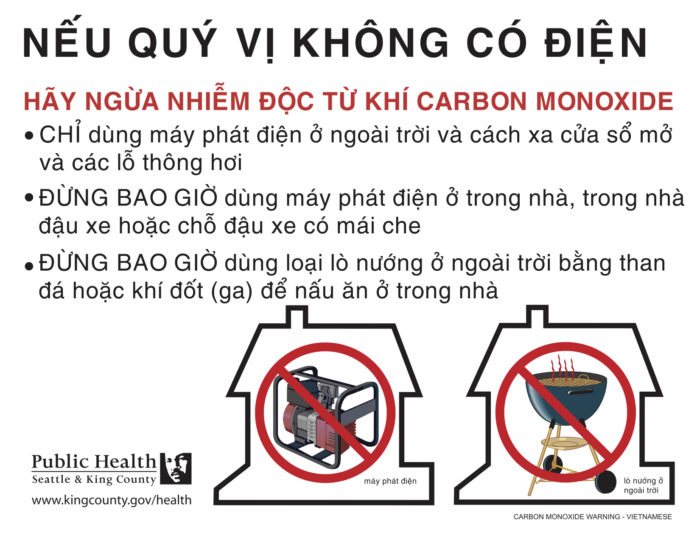Starting tonight, Seattle could be looking at a potentially devastating wind and rain storm, accompanied by fast winds and soaking rain, and residents have been advised to prepare for possible power outages.
This preparation includes outreach to immigrant communities, which a decade ago was hard hit by injuries and deaths from carbon monoxide poisoning due to misuse of generators and gas stoves.
The deadly 2006 Hanukkah Eve Windstorm showed why it’s a priority to ensure everyone has access to emergency preparedness information, regardless of language. During that storm carbon monoxide poisoning killed eight people and hospitalized 300 others.
Carbon monoxide poisoning can occur if residents use gas stoves or grills inside their homes, or if they operate a generator inside their garages or houses. Breathing in carbon monoxide can cause headache, dizziness, fatigue, weakness, confusion and nausea — and if untreated can lead to permanent brain injury or heart attacks.
“People need to turn off their natural gas appliances to prevent carbon monoxide poisoning,” said Cristina Labra, an emergency preparedness communication specialist at Washington’s Department of Health. “Never use a gas stove for warmth, burn charcoal indoors, or use a generator ongoing in the garage or in their house.”
Safety and preparedness fact sheets are available in many different languages, but it’s not just translation that can be a barrier.
“We know that not only reading English is a problem, but also accessing content on the web can be difficult too,” said Meredith Li-Vollmer, King County Department of Public Health’s risk communications specialist.
Officials also reach out to community leaders to provide assistance, Li-Vollmer said.
“We have a community communications network we have developed over the years, and we have around 700 organizations and individuals on that list. We prefer to go through them because they have a lot of one-on-one interactions and they are trusted by their community.”
The network was first created in 2005, and was tested when the storm struck. Li-Vollmer describes the experience in 2006 as a “terrible learning lesson” and the driving impetus for their current efforts to broaden their outreach.
Other outreach methods include partnering with apartment managers near storm season to distribute information to residents who are more isolated. In addition they have worked with hardware stores that sell generators to make sure to teach customers the potential risks that come with them.
Li-Vollmer said her department always asks questions as to how it can better reach communities with important information.
“We’re always working on those relationships, over the last 10 years we have been working on making that more robust,” Li-Vollmer said.
Carbon monoxide information safety information is available in multiple languages.


